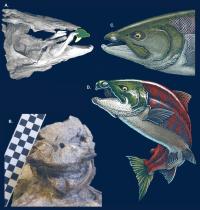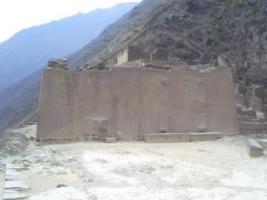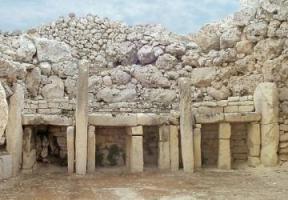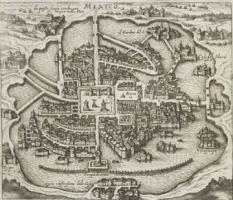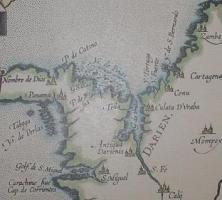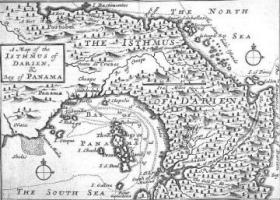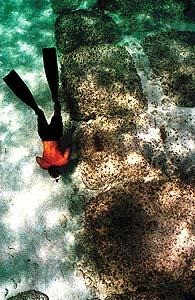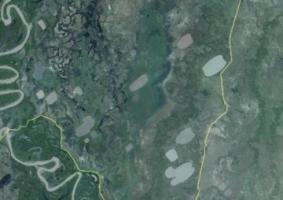Copy Link
Add to Bookmark
Report
Public-Access Computer Systems News Volume 5 Number 04

Date: Tue, 13 Dec 1994 10:47:30 CST
Reply-To: Public-Access Computer Systems Publications
<PACS-P@UHUPVM1.UH.EDU>
From: Public-Access Computer Systems Forum <LIBPACS@UHUPVM1.UH.EDU>
Subject: Public-Access Computer Systems News 5, no. 4 (1994)
+ Page 1 +
-----------------------------------------------------------------
Public-Access Computer Systems News
Volume 5, Number 4 (1994) ISSN 1050-6004
Editors: Linda Thompson (LIB1J@UHUPVM1.UH.EDU) and Ann Thornton
(AThornton@UH.EDU).
Issued on an irregular basis by University Libraries, University
of Houston, Houston, TX 77204-2091.
-----------------------------------------------------------------
CONTENTS
Apple Announces "Cool Tools" Awards for Internet Programming
Efforts, 1
Carnegie Mellon University and SIRSI Corporation Announce Library
Management System and Technology Transfer Agreements, 3
Getty Art History Information Program Launches Initiative on
Digital-Imaging Standards, 4
DRA Adds Subject and Keyword Searching to Its LC MARC Database, 5
ISSNs Now in PAIS Data Records on Tape, 6
APPLE ANNOUNCES "COOL TOOLS" AWARDS FOR INTERNET PROGRAMMING
EFFORTS
The Advanced Technology Group of Apple Computer, Inc. announced
that it has awarded eleven individuals and organizations with
"Cool Tools" awards. This special award is designed to recognize
programmers and their contributions of a wide variety of tools to
allow Macintosh users to navigate the Internet.
In addition to a certificate of recognition, the Cool Tools
awardees will receive an Apple(r) Power Macintosh(tm) 7100 from
Apple. The Macintosh Cool Tools Internet Award recipients and
their projects are:
o The Internet Society, Reston, Virginia, for its efforts to
foster a global environment conducive to the easy exchange
of information and the rapid development of standards and
new software. Internet Society, 12020 Sunrise Valley Dr.
Suite 270, Reston VA, 22091. Telephone: (703) 648 9888;
Fax: (703) 648 9887; Email: amr@isoc.org.
o Steve Dorner of QUALCOMM Incorporated in San Diego,
California, for Eudora, an electronic mail client for
Internet users. Telephone (800) 2-EUDORA; Email:
sdorner@qualcomm.com.
+ Page 2 +
o Chuck Shotton, Houston, Texas, for MacHTTP, a World Wide Web
server for the Macintosh. Telephone: (713) 794-5650; Email:
shotton@oac.hsc.uth.tmc.edu.
o Peter Lewis, Perth, Western Australia, for FTPd, an
anonymous file transfer server, and Anarchie, an FTP client
to search for and retrieve public files on the Internet.
Email: peter.lewis@info.curtin.au.edu.
o University of Michigan--Weather Underground, University of
Michigan, for Blue-Skies, a gopher client for browsing,
viewing and reporting real time weather and environmental
information in an interactive graphic and text format. Key
contributors include students Alan Steremberg, Derek Price,
Chris Schwerzler, and Michael Kamprath. The Weather
Underground is directed by Prof. Perry Samson with technical
direction from Jeff Ferguson. Telephone: (313) 936-0491;
Email: blueskies@umich.edu.
o John Hardin of EINet, Austin, Texas, for MacWeb, a
hypermedia World Wide Web client for the Macintosh.
Telephone: (800) 844-4638; Email: macweb@einet.net.
o National Center for Supercomputer Applications in Urbana,
Illinois, for Mosaic for the Macintosh, the crossover
application that has helped to spur interest in the Internet
for many commercial and non-commerical users. Telephone:
(217) 244-3473; Email: mosaic-mac@ncsa.uiuc.edu.
o Aaron Giles of Cornell University Medical College, New York,
New York, for JPEGView, a graphic utility that allows the
user to view compressed images on the World Wide Web, Gopher
or those retrieved from anonymous FTP servers on the Net.
Telephone: (212) 410-2781; Email: giles@med.cornell.edu.
o John Norstad of Northwestern University, Evanston, Illinois,
for Newswatcher, a Usenet new reader. Email:
j-norstad@nwu.edu.
o Cornell University, Ithaca, New York, for CU-SeeMe, a
conferencing tool that is being used by elementary schools,
individuals, and other organizations around the world for
low-cost video communications. Telephone: (607) 255-7566;
Email: r.cogger@cornell.edu. Files may be ftp'ed at gate
d.cornell.edu in the /pub/video directory.
o University of Minnesota, Minneapolis, MN, for the
TurboGopher client and GopherSurfer server. Internet Gopher
is a distributed system for campus and world information
which includes local information as well as links to other
Gopher servers. Telephone: (612) 625 1300; Fax: (612) 625
6817.
+ Page 3 +
Apple commissioned a panel of Apple employees to seek out and
critique currently available tools for Macintosh on the Internet,
to determine awardees. Programmers who would like more
information about Apple and the Internet may contact Steve Cisler
at sac@apple.com.
For Apple press releases by fax, call (800) AAPL FAX (800
227-5329) and enter I.D. number 6172. For more information,
contact: Betty Taylor, Apple Computer, Inc., (408) 974-3983;
betty.t@applelink.apple.com.
CARNEGIE MELLON UNIVERSITY AND SIRSI CORPORATION ANNOUNCE LIBRARY
MANAGEMENT SYSTEM AND TECHNOLOGY TRANSFER AGREEMENTS
Carnegie Mellon University and SIRSI Corporation, a leading
provider of information technology, announce their intention to
enter into agreements for future cooperation on several fronts.
Carnegie Mellon will license and install the SIRSI Corporation
Unicorn Information Management System.
Unicorn is a UNIX-based open system that uses the opportunities
presented by client/server architectures in highly networked
environments. It provides the functionality required by academic
and research libraries and is designed to manage increasingly
large databases of bibliographic information.
SIRSI and Carnegie Mellon will also enter into a technology
transfer agreement, to work together in several vital areas.
These include advanced usability testing for clients by Carnegie
Mellon Libraries. In addition, SIRSI will begin implementing
technologies for page image display, digital archiving, and
natural language information retrieval developed at Carnegie
Mellon. Carnegie Mellon will also work with SIRSI to implement
authentication and authorization features which will provide
necessary security for data and system integrity in open
environments.
Carnegie Mellon University is located in Pittsburgh,
Pennsylvania. The University Libraries hold a collection of over
805,000 print volumes, 500,000 titles, and 700,000 microforms.
The University has over 7,500 students and 800 faculty.
Founded in 1979 by information and computer professionals, SIRSI,
based in Huntsville, Alabama, is a leading provider of
information technology for libraries. SIRSI automates all
aspects of information management, from consortia to the single
desktop user. SIRSI systems are installed worldwide in academic,
public, law, medical, government, and corporate environments.
+ Page 4 +
For more information, contact: Jim Young, SIRSI Corporation, 205-
922-9820; or Charles B. Lowry, Carnegie Mellon University
Libraries, 412-268-2447.
GETTY ART HISTORY INFORMATION PROGRAM LAUNCHES INITIATIVE ON
DIGITAL-IMAGING STANDARDS
The Getty Art History Information Program (AHIP) has announced
the formation of an international Imaging Initiative to address
issues related to the use of digital images in the arts and
humanities. The Initiative will foster the development of
standards necessary to ensure that scholars, teachers, students,
and the general public have access to images of art and cultural
objects over electronic communications networks.
Recent technological developments make it possible to transmit
and view digital images over computer networks, but many barriers
remain to universal access. In March of this year, AHIP brought
together representatives from the various constituencies involved
in the issue--including image providers (museums, libraries, and
archives), legal experts, and computer network specialists--to
identify these barriers and pinpoint areas where AHIP could act
most effectively. Three principle concerns were recognized:
o Standards: Currently, there are no common standards for the
description, capture, storage, and transmission of images
within the arts and humanities community. Networked
collections, accurate description, and high image quality
and resolution are needed to build the critical mass of
images necessary to change effectively the teaching and
research methods used in the arts and humanities. The
Imaging Initiative will work to form a common understanding
of who uses digital images, how they use them, and the image
quality they require. This effort will also include the
development of standards for describing a digital-image
file, ensuring that scholars can evaluate the digital images
they use in their studies.
o Intellectual property rights: Many image providers see
electronic access to their collections as a great
opportunity to reach new audiences, yet the issues related
to compensation and the intellectual property rights of
digital images remain largely undefined. The Initiative
will develop and test a model for the licensing of images of
works of art, setting up a mechanism for the reliable
distribution of images that preserves image integrity and
prevents misuse.
+ Page 5 +
o Common vision: Currently, a wide range of technical options
are available to information providers, yet few serve the
long-term goals of universal access. Museum directors and
library administrators are often ill-informed about computer
technology, its potential, and its hazards. The Imaging
Initiative will develop a tutorial with noted
digital-imaging expert Howard Besser to inform image
providers about the benefits and challenges of electronic
imaging. The resulting information will be distributed
through brochures, fact sheets, white papers, and as an
interactive site on the Internet where users can work
through materials, make comments, download reports, and view
samples of digitized art.
The Getty Art History Information Program, one of six operating
programs of the J. Paul Getty Trust, seeks to make art-historical
information more accessible to scholars and researchers through
the use of advanced computer technology. It does so by promoting
common perspectives and standards among international
institutions and organizations on projects in three general
areas: coordinating vocabularies to facilitate consistent data
entry and retrieval; providing bibliographic services; and
assembling art-historical databases. AHIP plays a catalytic role
in helping to focus attention on the collective challenges facing
the information community in the coming decades. Among AHIP's
projects are the Art and Architecture Thesaurus, the Bibliography
of the History of Art, the Avery Index to Architectural
Periodicals, the Provenance Index, the Witt Computer Index, and
the Getty Study of Online Searching by Scholars.
For more information, contact: Phillipa Calnan, Director, Public
Affairs, The J. Paul Getty Trust, 401 Wilshire Blvd, Suite 900,
Santa Monica, CA, 90401-1455; Phone: 310-395-0388; Fax: 301-395-
5289.
DRA ADDS SUBJECT AND KEYWORD SEARCHING TO ITS LC MARC DATABASE
Data Research Associates, Inc. (DRA) announced that it has
increased the flexibility and accessibility of one of its most
popular resources, the LC MARC database, when it added the
ability to search by subject or by keyword. These searches are
in addition to past search capabilities, including author, title,
and various identification numbers. Keyword searching provides,
among other functions, the ability to perform a search for a
series title and the ability to search for current popular
topics.
+ Page 6 +
Via DRA's Z39.50-compliant server, the LC MARC database can be
accessed from any Z39.50-compliant client, whether or not that
client is a DRA product. The server supports all Z39.50 Version
2 facilities, allowing for a wider range of search capabilities,
including:
o search qualifiers (such as author, title, subject, call
number, LCCN, ISBN, etc.)
o truncation in search terms
o named search sets (enabling the combination of previous
search result sets with new search terms)
Available for more than a decade, the LC MARC database consists
of more than four million records representing bibliographic,
serial, map, and other items cataloged by the Library of
Congress. Hundreds of libraries across the globe use this
database daily, via either the Internet or Open DRANET, to serve
as a reference tool. Or, if they are using the DRA cataloging
module, they use the database to copy bibliographic records to
their own system. Recent average use included more than 5,200
connections per day, with more than 1,200 records copied.
For more information, contact: Joe Bonwich (Joe@dra.com).
ISSNs NOW IN PAIS DATA RECORDS ON TAPE
Public Affairs Information Service, Inc. (PAIS), publishers of
the premier international index of public affairs and social
policy information, is pleased to announce that its magnetic tape
format of the PAIS International bibliographic database now
includes the International Standard Serial Number (ISSN).
In 1993 PAIS introduced a new magnetic tape format providing
distinct data fields, such as Library of Congress number, journal
name, or Superintendent of Documents number, which had previously
been formatted in a single citation field. The new tape format
is designed to provide data elements in separate fields in order
to make index-building easier and consequently to improve search
results.
The ISSN, while provided as a data element in the separate
Periodicals Authority file, the complete listing of periodicals
used for PAIS indexing documents, was not provided in the
periodical bibliographic entry. Now the bibliographic entries
for 94% of the PAIS periodical articles includes the ISSN.
+ Page 7 +
PAIS expects the provision of the ISSN in the bibliographic entry
to prove valuable. One anticipated benefit is in the area of
document delivery. It will be easier to order documents
identified in the PAIS International database with the ISSN
number in the bibliographic entry. Subscribing organizations can
also use the ISSN as a match element to identify periodicals held
in their collection.
Public Affairs Information Service, Inc., founded in 1914, is a
nonprofit educational corporation, chartered by the Regents of
the University of the State of New York, providing online,
printed, and optical bibliographic indexes to the public policy
literature of business, health, law, government, political
science, and other social services.
For more information, contact: Barbara M. Preschel, 212-736-6629.
-----------------------------------------------------------------
Public-Access Computer Systems News is an electronic newsletter
that is distributed on Internet and other computer networks.
There is no subscription fee.
To subscribe, send an e-mail message to LISTSERV@UHUPVM1.UH.EDU
that says: SUBSCRIBE PACS-P First Name Last Name. PACS-P
subscribers also receive two other electronic serials: Current
Cites and The Public-Access Computer Systems Review.
Public-Access Computer Systems News is Copyright (C) 1994 by the
University Libraries, University of Houston. All Rights
Reserved.
Copying is permitted for noncommercial use by academic computer
centers, computer conferences, individual scholars, and
libraries. Libraries are authorized to add the journal to their
collection, in electronic or printed form, at no charge. This
message must appear on all copied material. All commercial use
requires permission.
-----------------------------------------------------------------








